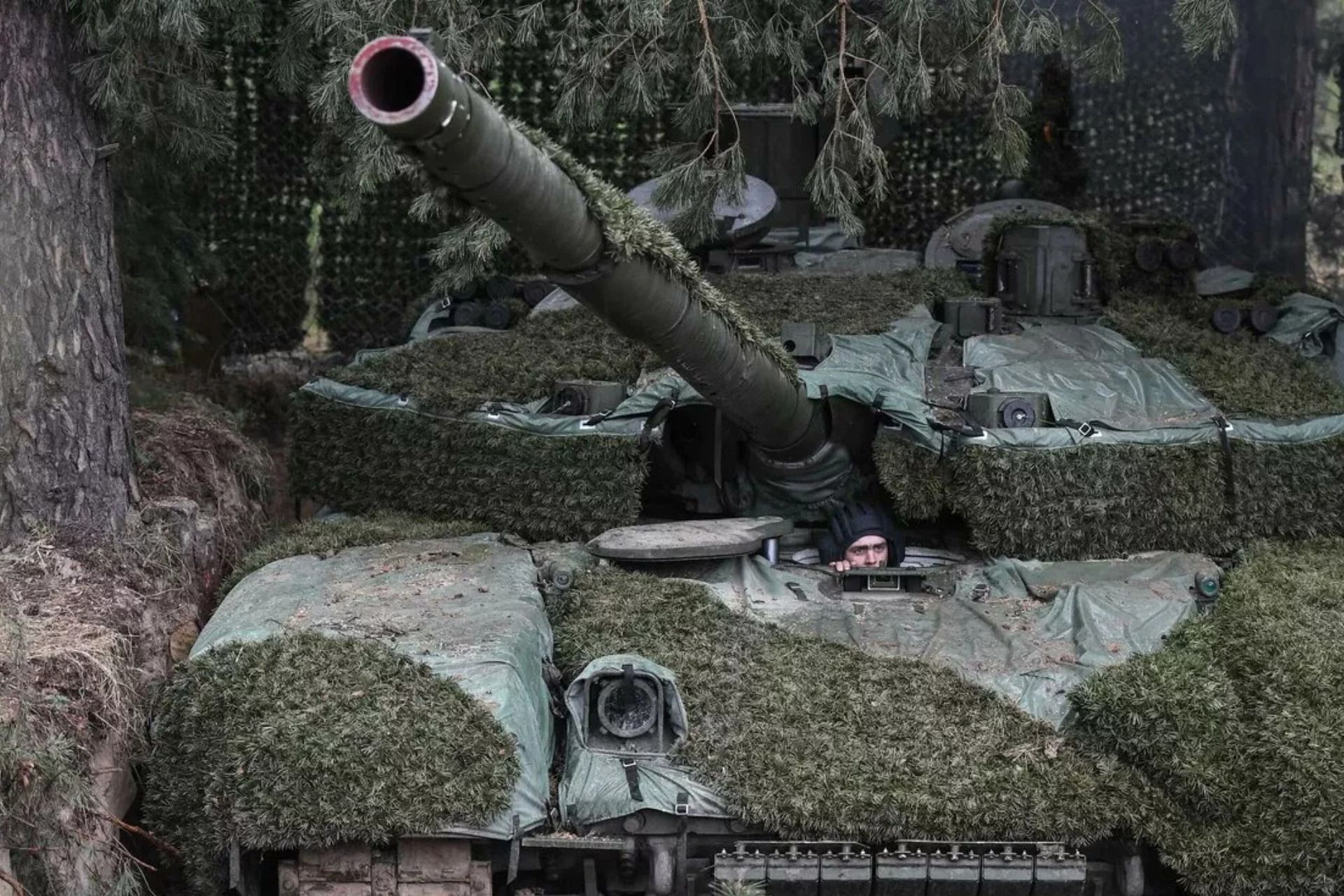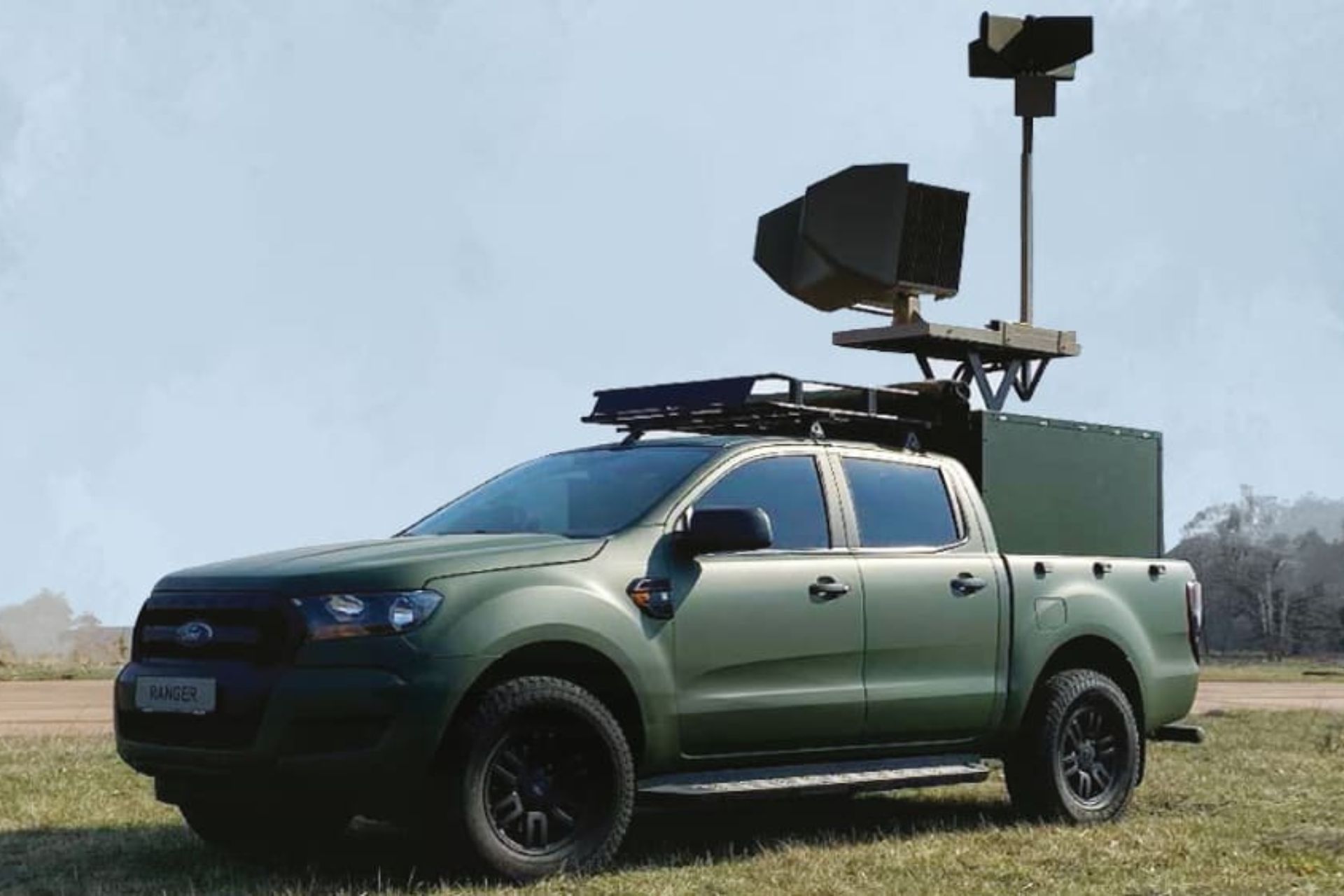Breaking News
Analysis: How New Technologies are Redefining Transparency and Opacity on Battlefield.
The evolution of the modern battlefield is marked by a profound transformation driven by transparency, a characteristic that has become central due to technological advancements. Drones, radars, satellites, and other sensors now enable continuous and near-real-time surveillance of operational theaters. However, this transparency comes with its own set of challenges. Armed forces around the world have adapted by developing sophisticated countermeasures aimed at restoring opacity and protecting their assets. These techniques include the use of multispectral camouflage nets, electronic jamming capabilities, the reduction of thermal and acoustic signatures of vehicles, and rapid, unpredictable tactical maneuvers. Follow Army Recognition on Google News at this link

The Strv 122 is equipped with the MCS Barracuda from Saab Defense (Picture source: Saab)
The concept of battlefield transparency, though recent, is rooted in a long-standing quest to see and understand the actions of the adversary more effectively. With the advent of modern technologies, this quest has taken on a new dimension. Today, the ability to monitor a battlefield in fine detail in real-time is not only possible but common. This capability is largely driven by drones, which patrol conflict zones, sophisticated radars that penetrate clouds, and satellites that provide detailed images from space.
However, this battlefield "transparency" carries risks. Increased visibility of forces on the ground can be a double-edged sword, especially if the enemy has access to the same information. This is where the countermeasures developed by militaries come into play to restore some level of opacity. These measures include multispectral camouflage nets, modifications to vehicle thermal and acoustic signatures, and electronic jamming.

The Barracuda camouflage uses a combination of special materials that not only camouflage troops and vehicles in the visible spectrum but also reduce their thermal and radar signatures (Picture source: Saab)
Multispectral Camouflage Nets:
Multispectral camouflage nets represent a significant advancement in protecting ground forces from surveillance. Unlike traditional camouflage nets designed primarily for visual concealment, these new nets are engineered to deceive a variety of sensors operating across different spectra, including visible, infrared (IR), and sometimes even radar waves.
One of the most advanced examples of this technology is the Barracuda camouflage system developed by Saab, a Swedish defense company. This system uses a combination of special materials that not only camouflage troops and vehicles in the visible spectrum but also reduce their thermal and radar signatures. The Barracuda system has been used by several militaries around the world, including the Swedish and U.S. forces. In Ukraine, although specific information is scarce, it is likely that local or imported versions of such systems have been deployed to protect units from Russian drones and sensors.
These nets are made from materials capable of reflecting and absorbing heat, as well as other types of electromagnetic waves. They are also often designed to be modular, allowing for quick adaptation to different environments and terrains encountered on the battlefield.

In Ukraine, two T-90M "Proryv" tanks equipped with Nakidka were captured in the Kharkiv and Donetsk oblasts (Picture source: Ria Novosti)
Modification of Vehicle Thermal and Acoustic Signatures:
Military vehicles, particularly armored ones, are prime targets on the battlefield, with their large size and emitted heat easily detectable by infrared sensors. To counter this vulnerability, several techniques have been developed to reduce their thermal and acoustic signatures.
A concrete example is the thermal dispersion exhaust system used by combat tanks such as the American M1 Abrams and the Russian T-90. These systems reorient and disperse exhaust gases to reduce emitted heat, making it less detectable by infrared sensors. In Ukraine, armored vehicles have also used similar, sometimes improvised, devices to reduce their thermal visibility against Russian drones and guided missiles.
Additionally, vehicles are often equipped with special coatings designed to absorb or disperse heat, making infrared detection more difficult. For instance, the German Leopard 2A7+ tank is equipped with these technologies to reduce its thermal signature. Russian vehicles like the T-14 Armata are also equipped with similar systems, though their effectiveness in combat conditions remains to be fully assessed.
Reducing acoustic signatures is another technique employed. Engines and transmission systems are often insulated with special materials to reduce noise, making vehicles harder to detect by acoustic sensors. This is particularly relevant in conflict zones where environmental conditions (such as snow or dense forests) favor the use of acoustic sensors for detection.

A Russian Krasukha-4 electronic warfare system(Picture source: WikiCommons)
Electronic Jamming:
Electronic jamming is another crucial response to battlefield transparency. This type of countermeasure aims to disrupt enemy communications, radars, and even missile guidance systems. The Ukrainian, Russian, and U.S. militaries have all developed advanced capabilities in this area.
In Ukraine, the use of electronic jamming systems like the "Bukovel-AD" has been widely reported. This system, developed by the Ukrainian company Proximus, can jam the control signals of enemy drones, preventing them from transmitting real-time images or even following their pre-set flight paths. The Bukovel-AD has been successfully used to counter Russian Orlan-10 drones, which are often employed for reconnaissance and target acquisition.
Russian forces, for their part, have the Krasukha-4, an electronic warfare system designed to jam enemy radars and communication systems. It has been deployed to protect Russian units from Ukrainian drones and Western radars. The Krasukha-4 works by emitting powerful signals that saturate enemy radar receivers, rendering them ineffective.
The United States, a pioneer in electronic warfare, uses systems like the AN/MLQ-40 "Prophet," a mobile jamming system that can intercept, analyze, and jam enemy communications. It has been used in several conflicts, including in Afghanistan and Iraq, and continues to be a critical asset for U.S. forces facing technologically advanced adversaries.

The Bukovel-AD developed by the Ukrainian company Proximus, can jam the control signals of enemy drones, preventing them from transmitting real-time images or even following their pre-set flight paths (Picture source: Spetstechnoexport)
Battlefield transparency, far from stabilizing, is a constantly evolving domain where technology continually pushes the boundaries. However, this pursuit of total visibility raises critical questions about the future of warfare. As surveillance and reconnaissance systems become more sophisticated, countermeasures must also evolve, creating a perpetual cycle of innovation between transparency and opacity. This cat-and-mouse game shows no signs of slowing down, and militaries worldwide will need to invest increasingly in research and development to maintain their strategic advantage.
The future may see the integration of artificial intelligence not only to detect but also to anticipate enemy movements, making the concept of surprise even more complex. Similarly, advancements in stealth materials, electromagnetic signature management, and quantum technologies could revolutionize how transparency and opacity are perceived on the battlefield. In this context, military doctrines will need to adapt quickly, integrating these new capabilities while reassessing the fundamental principles of warfare.
Ultimately, transparency will never be absolute, and uncertainty will remain an intrinsic element of war. However, those who can master the delicate balance between visibility and invisibility, between information and disinformation, will dominate the conflicts of tomorrow. The strategic, ethical, and technological implications of this dynamic will continue to fuel debates within armed forces and defense institutions, shaping the future of international security.


























